
Microsoft’s plan for the future of gaming is to not leave anyone behind. It hopes to ensure that a wide range of devices – regardless of what they’re capable of graphically – will be able to access a vast library of games, online friends and a growing, service-driven ecosystem.
The Xbox Series X sits at the forefront of this vision, acting as Microsoft’s flagship console for the coming generation, and a direct rival to Sony’s PlayStation 5. According to Microsoft it’s the most powerful games console ever released and will act as a benchmark for new experiences. If that wasn’t enough to tempt you, it also hopes to embrace the brand’s legacy through backwards compatibility.
So, has it been successful in this mission? Or does the current lack of worthwhile exclusives in the early months of release prevent it from being a machine worth owning? I’ve spent weeks with the console, and can confidently say the Series X is a monster. It’s capable of obscenely fast loading times, crystal-clear performance and a level of fluidity I’ve never seen before.
Microsoft has spent years trying to earn back the gaming identity it relinquished with the mediocre launch of Xbox One, and under the leadership of Phil Spencer, it’s now closer than ever to leading the pack. So, let’s break down exactly what makes this next-gen console so special, and consider whether you may want to pick one up.
Related: Best Xbox Series X Games
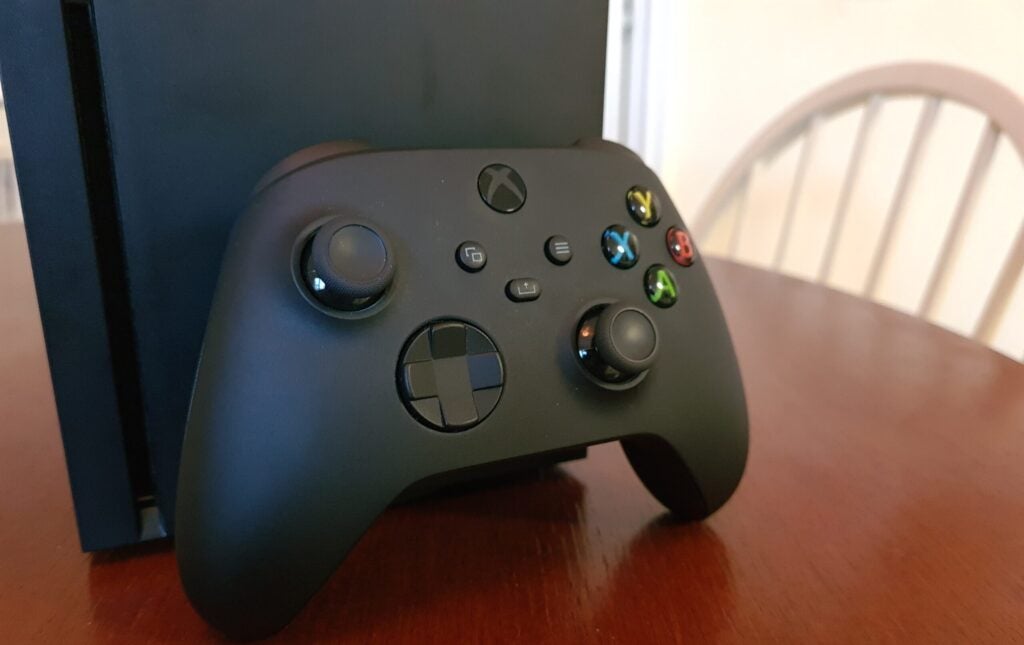
Xbox Series X Review – Design and connectivity
Microsoft has abandoned previous design conventions with the Xbox Series X, opting for something more akin to an office desktop PC than a traditional gaming console. It’s a brave departure, and one of which I’m definitely a fan. At first glance it may appear needlessly bulky, but it has slotted under my desk, alongside my existing TV setup with ease, the sharp corners and distinct profile making it an ideal fit.
Measuring 301 x 151 x 151mm and weighing 4.46kg, the Series X has a noticeable heft, but one that also exudes a degree of premium quality you’ll see in only top-quality electronics. You may or may not appreciate the design, but you certainly wouldn’t be able to deny the craftsmanship. Taking certain aspects of the Xbox One X blueprint, Microsoft expands upon them here, maintaining visual motifs that set it apart from the less powerful Series S.
The power button sits isolated in the left-hand corner, while the eject and sync buttons are seen alongside the disc drive and a single USB 3.1 port on the opposite side. Once again, it’s a minimal yet impactful approach that Microsoft is aiming for, and every facet of the Series X oozes this sense of style. The remaining sides are left completely blank, with the exception of four small nubs that cushion the console if it’s positioned on its side. Be warned, it’s also a fingerprint magnet.
Related: Halo Infinite
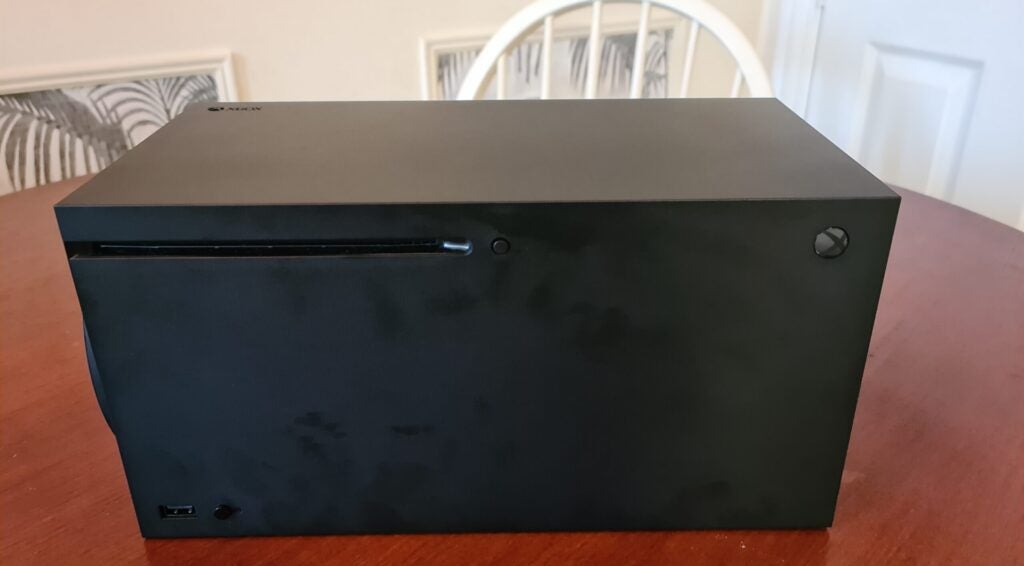
Be mindful of ventilation though; the fan resides on the top of the unit, indicating that a horizontal position is arguably the Series X’s ideal. On the rear of the unit you’ll find the console’s ports along the lower half, with the number reduced somewhat next to the Xbox One family of machines. Inputs include an HDMI 2.1 port, 2 USB 3.1 ports, an Ethernet port and a storage expansion slot.
Memory expansion is handled by bespoke SSD drives produced by Microsoft in partnership with Seagate. You’ll require a specific drive speed to handle titles that are optimised for Series X. They’re expensive, and we’ve yet to test one for ourselves, but the insertion and removal of such devices is incredibly seamless.
The controller is a small yet worthwhile improvement over the Xbox One peripheral. It feels more comfortable to hold thanks to a textured grip across the back and along the triggers. A share button has also been introduced, making the act of capturing your epic gamer moments far more simple. Those who use rechargeable battery packs will require a USB-C cable, which is now the standard input for the controller. Unfortunately, one isn’t included in the box.
Dolby Atmos and HDR are fully supported on Xbox Series X, receiving solid implementation in the majority of enhanced games I’ve tested and looking positively gorgeous on my Sony X900H LED. Automatic HDR has also been incorporated into backwards compatiblity, applying the feature to titles which were never intended to support it.
The results can be mixed, but are ultimately impressive given it can be spread across three generations of hardware. More vibrant colours, realistic lightning and a sharper image overall across the majority of my library is a lovely little bonus, and will likely only improve as Microsoft hones it further in future updates. On my display I had to disable Dolby Vision when switching to a 120fps output, which is a worthwhile compromise given the performance gain.
Related: PS5 vs Xbox Series X
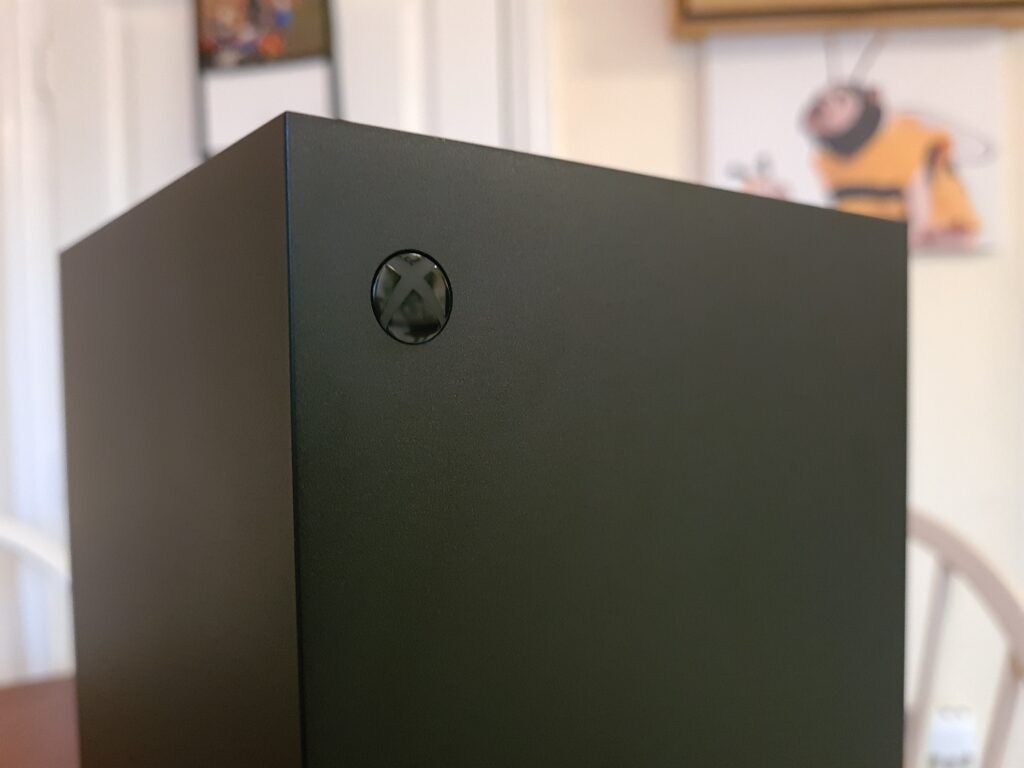
So, what about the omissions? The infrared blaster and HDMI passthrough have been abandoned, largely because this is now a dedicated games console, rather than an “all-in-one media station”, like the vanilla Xbox One. I have welcomed the flat, angular design of the Xbox Series X, which has made inserting cables from behind a relative breeze; rather than having to fiddle hopelessly in the dark or having to lift the heavy unit out of its resting place.
Overall, the design of the Xbox Series X is likely to be polarising, especially for those who are used to more traditional consoles. To me, it’s clear that Microsoft is following a roadmap with this design, building creatively on what came before it to ensure the Series X is seen as its most powerful console yet. The monolithic nature of its design is purposefully impactful, making it the ideal older sibling to the comparably dinky Xbox Series S.
Xbox Series X Review – Specs and technology
The Series X is the most powerful console Microsoft has ever made, both in terms of its specifications and the tech being employed to push games from the past, present and future to new limits. I’ve seen the company’s bold claims come to fruition over the past few weeks, with the console transforming gaming experiences that once felt clunky and archaic into something that feels futuristic.
First, let’s start with the foundations. Xbox Series X is powered by a custom AMD Zen 2 CPU with eight individual cores running at 3.8GHz, one of which is dedicated entirely to operating system and user interface functions. While its layout remains largely unchanged, siphoning off such concrete resources to the UI results in unfound levels of fluidity. Even with ample amounts of power, at times the Xbox One X continued to struggle with system navigation; conversely, the Series X decimates obstacles without hesitation.
As for the GPU, Microsoft once again teams up with AMD, with RDNA 2 architecture being implemented into the graphics processor. Boasting an impressive 56 compute units with 3,584 cores, it’s capable of pushing select games up to a 4K at 120fps performance, which is impressive even when compared to the latest PC gaming hardware.
While the resolution ceiling currently sits at 4K for gaming, Xbox Series X is in possession of HDMI 2.1 – which, technically, makes 8K output possible. However, you’ll likely only see 8K resolutions for media playback on streaming services such as Netflix and Disney Plus once support surfaces. You’ll also need a top end telly or monitor to actually see the improvements.
Related: Xbox Series X vs Xbox Series S
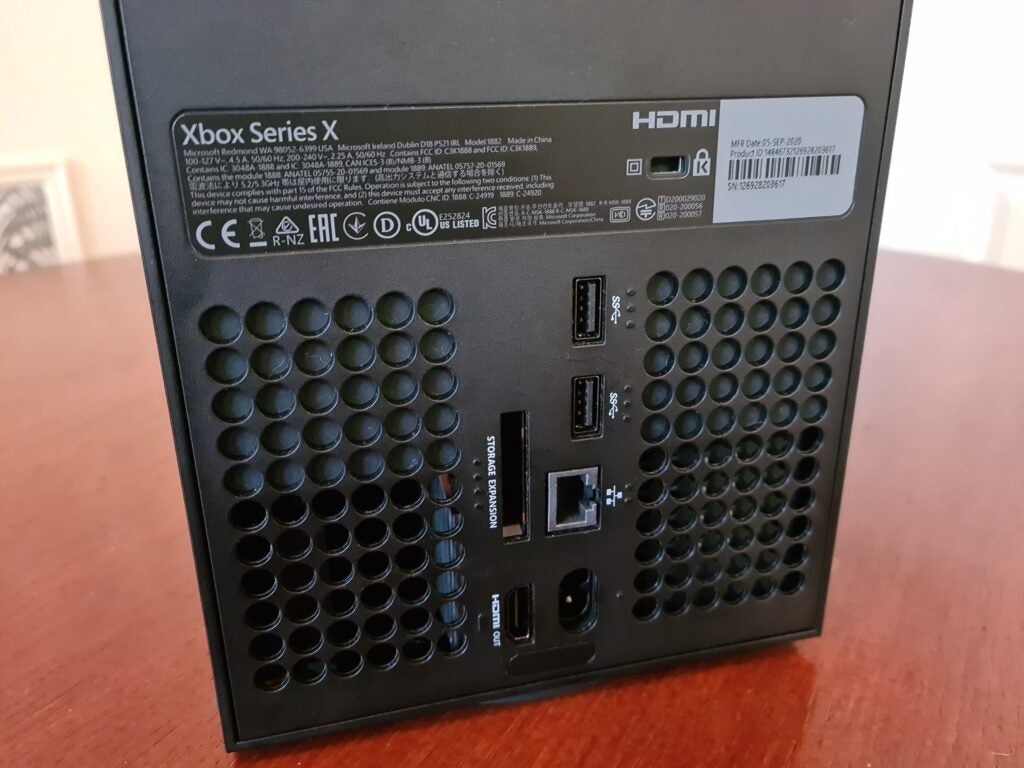
You’re probably sick of hearing about teraflops as a nonsensical buzzword for the most powerful consoles on the market, so I’m delighted to report that Xbox Series X has 12.15 of the suckers. That’s roughly four times more than the Xbox One X. Given that the aforementioned console is still capable of pushing modern blockbusters to native 4K with a decent level of performance, this is a frankly astounding specification.
Alongside the almighty teraflops you’ll find 16GB of GDDR6 memory, 10GB of which is being prioritised to games themselves, The remaining 6GB aims to focus on computing functions, like the user interface. In the future, it is likely that talented developers will be able to focus resource management to really help this console sing.
Moving away from the innards, what does the Xbox Series X achieve outside of the box? With a lack of exclusive launch titles, there are third-party offerings, backwards compatibility and a selection of optimised upgrades. Given the compromises that have weighed them down, Microsoft has done a stunning job of showcasing the reasons its new console should be taken seriously, and it’s now the fastest console money can buy.
Related: Upcoming Xbox Games
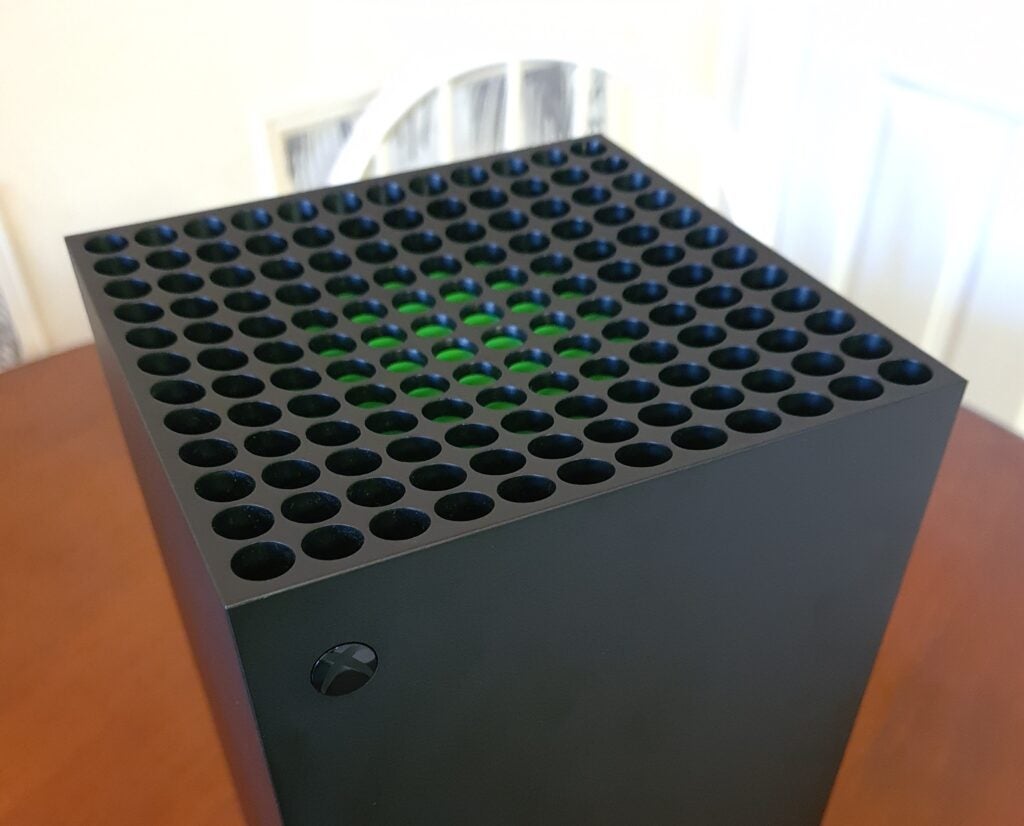
The ceiling of performance sits at 4K/120fps, but the Series X isn’t capable of propelling every game to this graphical standard. Instead, experiences will vary wildly, especially with backwards compatible previous gen’ titles. This is a machine that can play hundreds of games spread across the original Xbox, Xbox 360 and Xbox One, providing profound performance and visual improvements to the majority of them.
While this is a positive in every conceivable way, it also means we have few options to really push the Xbox Series X to its limit right now, which will likely put off the more casual consumers who might instead opt for the Series S. It’s when graphical techniques such as ray tracing and higher frame rates become more commonplace that Microsoft will truly push the digital boat out to sea.
For now, we’re waiting at the docks and playing with toys we’ve had for months, even if said trinkets happen to look more gorgeous than ever. Putting the delay of Halo Infinite aside, the future is incredibly bright for Xbox Series X with the likes of Fable 4, Hellblade 2 and more waiting to be unleashed. The launch window also teases a heavy wave of third-party support, with a particular focus on Japanese franchises such as Yakuza, which looks stunning on the new console.
Xbox Series X Review – Graphics and performance
To test graphics and performance on Xbox Series X, we played a selection of games through native backwards compatibility and those with specific optimisations for the platform. Following the installation of an update, we’ve yet to find a game outside of those that support Kinect, which won’t play nicely with the Series X. It’s simply a case of inserting a disc or installing the application from your digital library before diving right in.
The seamless nature of maintaining your existing console experience, but with so many quality-of-life improvements, is incredibly welcome – and this is evident in the loading times of every game we tested. Whether or not it has received a bespoke update to support the console, Xbox Series X is capable of decreasing the time it takes to jump into games significantly, while simultaneously pushing resolution and performance. For context, the below metrics refer to loading from the title screen directly into gameplay.
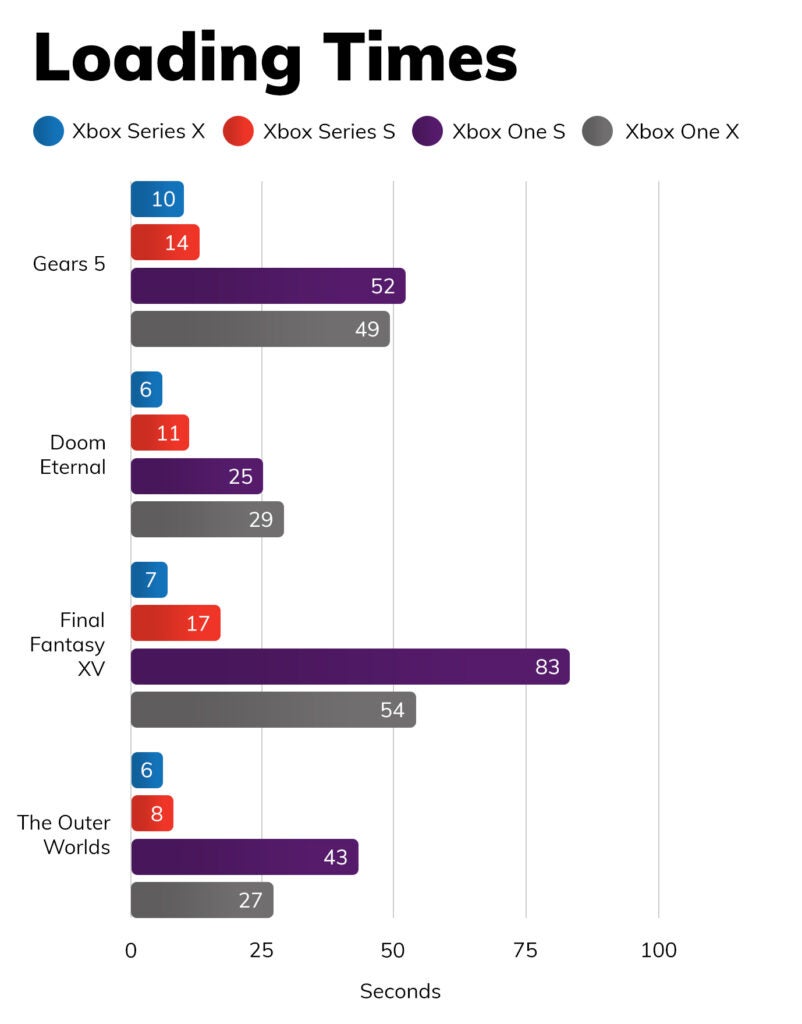
Backwards compatibility does have its disadvantages, however. If, in the past, a title hadn’t received an update to enable support for the Xbox One X, it can look particularly rough visually. While it’s smooth and satisfying to play, Watch Dogs 2 is a mess of aliasing artefacts and poor draw distances, since it’s working from the technological compromises applied by the original Xbox One hardware.
Similar complaints can be levelled at games such as Alien Isolation and Wolfenstein: The New Order, which don’t reap all of the benefits of Series X simply as a result of their original state. This isn’t a deal-breaker, but something worth taking into account for those who plan to dig deep into their existing libraries. Those titles with dedicated updates are a different story entirely, with Final Fantasy XV being given a second lease of life with dramatically enhanced loading times and performance that’s now locked at 60fps.
It’s a similar story with Monster Hunter World and NieR: Automata, which show that previous generation titles with unlocked frame rates are now able to go much further without making the Series X break a sweat. Games with locked frame rates can’t be changed on Series X, so it’s only possible to benefit from backwards compatibility to a degree before you hit a wall. Nevertheless, having access to so many games at your fingertips is a net positive, even if they could be pushed further with a bit of tinkering.
Related: Best PS4 Games
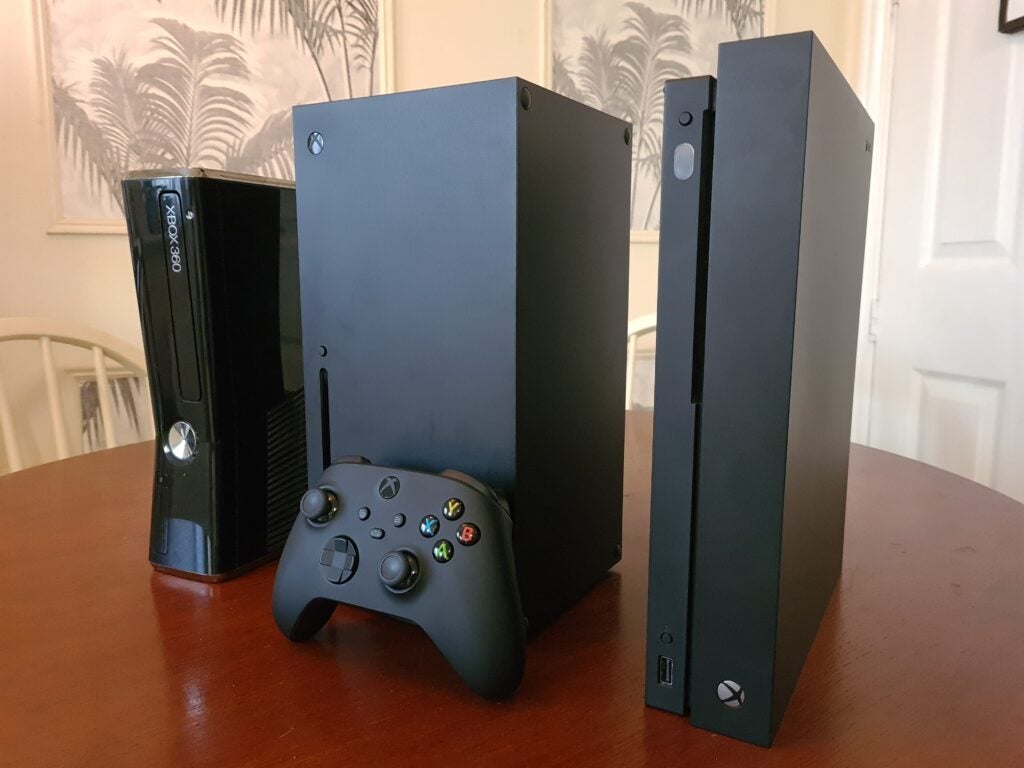
As for games that have been optimised specifically for Xbox Series X, I tinkered with the following while testing for my review:
- Gears 5
- Tetris Connected
- Yakuza: Like a Dragon
- The Touryst
- Watch Dogs Legion
- Gears Tactics
- Ori and the Will of the Wisps
- Forza Horizon 4
Exactly what the word “optimised” means will vary depending on the title, but you can usually expect improved performance, visual fidelity and graphical features such as ray tracing and 120fps performance that simply weren’t possible on the previous generation of consoles. Gears 5 is easily the most impressive example, taking a third-person shooter that already ran beautifully on Xbox One X and enhancing it even further.

(Left: Xbox One X, Right: Xbox Series X)
The Coalition has put its own personal touch into a new update that builds on the visual fidelity with increased detail across its characters and environments. Series X also allowed the studio to decrease latency in controls, resulting in a far smoother experience overall when actively reloading amidst hordes of locusts. The big takeaway is 120fps multiplayer for those with compatible displays, doubling the smoothness of the action in a very significant way.
Another flagship title is Yakuza: Like a Dragon, a series that’s been a PlayStation mainstay since its inception – but it’s now hopped into Microsoft’s open arms. With the PS5 version set to release in March 2021, this is the only way to experience the 7th instalment on next-gen hardware. The eccentric RPG can be played in two modes, one that prioritises performance, and another that amps up the visuals to unprecedented levels. You can find screenshots comparing the two below.

(Left: Xbox One X, Right: Xbox Series X)
Given its status as a turn-based RPG, the majority of my playthrough was spent at 4K/30fps, happy with the lower level of performance so the luscious cities of Yokohama and Kamurocho could really shine. But if you’d rather play at 60fps at 1440p, the option is there, and it marks the first time the engine has achieved such a benchmark on console.
The reflections of streetlights in shallow puddles possess a luminescence on Series X that’s lacking in older consoles, while the increased resolution allows characters and buildings to pop with flair. Aliasing and jagged edges are vastly reduced on both modes, showing that some serious effort has gone into making Yakuza shine.
Xbox Series X – User experience
The user interface for Xbox Series X is virtually identical to the previous generation, although the power of the console allows for everything to feel far more cohesive and satisfying during moment-to-moment navigation. You can transition between menus and applications within seconds, instead of having to wait for assets to load on Xbox One. It’s such a stark difference, and I found it hard to go back when revisiting older hardware.
Sharing screenshots and videos has been a part of the Xbox ecosystem for several years now, and the new controller allows you to capture them with a touch of a button. It’s seamless, and everything you take will be automatically uploaded to Xbox Live for saving and sharing after the fact. Or, you can do it directly from your console.
Related: Cyberpunk 2077
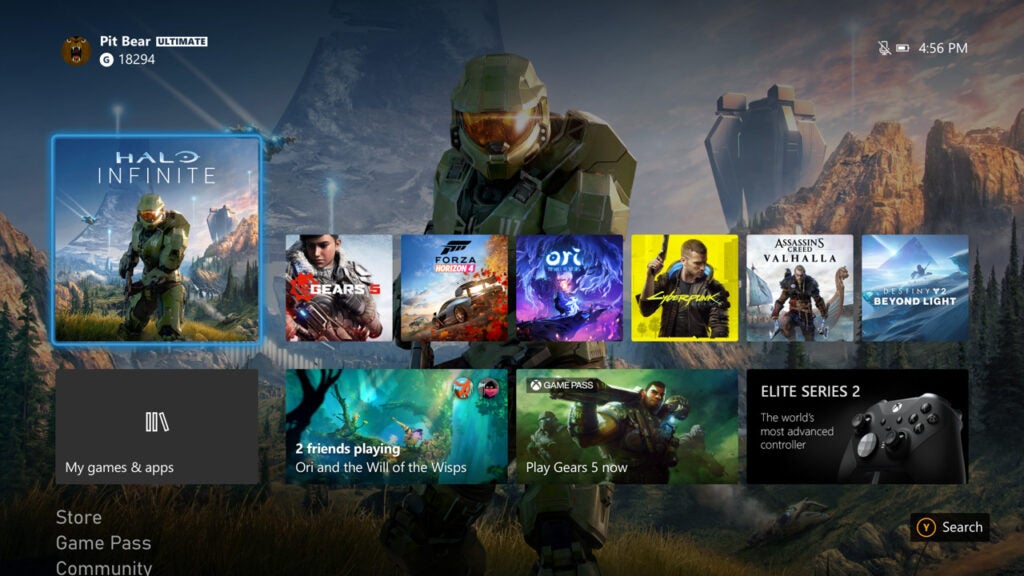
There’s still a few more hoops to jump through before sharing a screenshot than I’d like, and the experience lags behind the PS5 in terms of overall speed – but it’s a far cry from what came before it. Much like previous generations, it’s likely that Microsoft will continue to innovate the user interface in forthcoming years, but right now I feel it’s in a good place.
Accessing your games, engaging with online communities and even swapping games between different drives is a breeze, demonstrating the impact of the SSD. Quick Resume is a revolutionary new feature that’s changed how I approach gaming on Xbox platforms.
It lets you seamlessly switch between a maximum of six games almost instantly, dropping you directly into the action without having to load progress or wait for an onslaught of logos to pass by. I was shocked by the fluidity of this feature, branding it as witchcraft after Quick Resume was able to recall the states for several games after having been unplugged overnight.
Related: Best PC Games
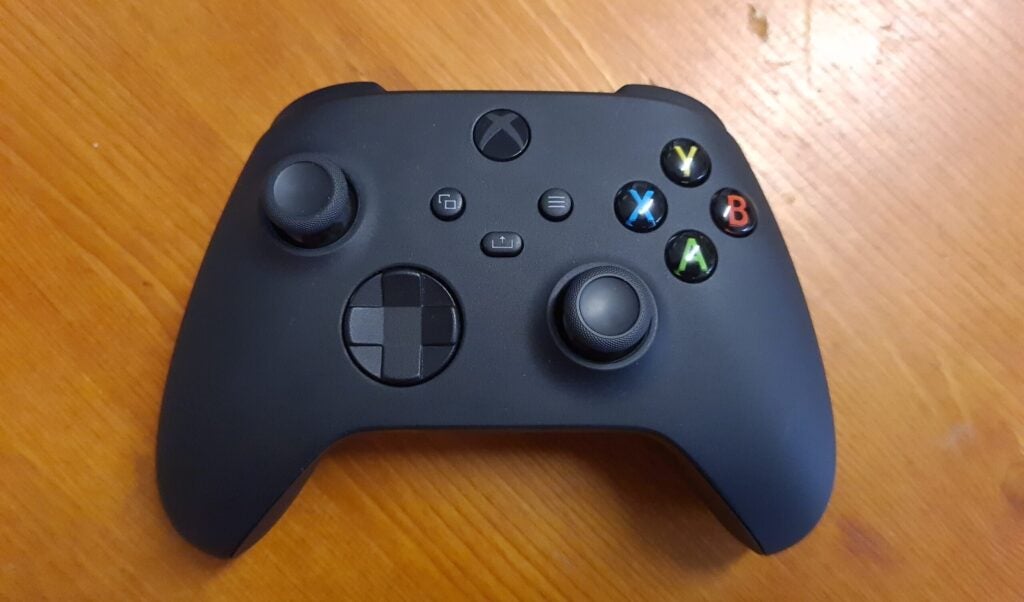
The SSD is caching instances of each game into its storage, which the Series X is able to switch between in an instant. There’s no negative impact on performance or visuals as a result; you’re simply returning to a game as if it’s been freshly booted. Certain titles that rely on a constant internet connection don’t support the feature right now, which is understandable, but the fact that the majority of experiences both old and new support this feature out of the box is staggering. I did encounter a few bugs, most notably being losing all audio in Yakuza: Like a Dragon upon booting up via Quick Resume
Xbox Series X also comes with a 4K Blu-ray player, which is far more capable than what was packaged with the One X and One S. Testing a film that supports both 4K and HDR, the experience was smooth, responsive and the image on-screen looked positively gorgeous.
Should you buy the Xbox Series X?
If you’re a passionate fan of the Microsoft brand and have invested heavily in its games and hardware, the Xbox Series X is an essential piece of kit.
It builds upon the Xbox One family of consoles with a frankly startling range of improvements that puts gaming at the centre of its ecosystem. While the selection of launch exclusives are light, the focus on backwards compatibility and optimisation of games both past, present and future lightens what could have been a blow to little more than a prod.
Outside of the exclusives it does a fantastic job improving the overall user experience with the likes of Quick Resume, Smart Delivery and Xbox Game Pass. These are all elements that will define Xbox for years to come, and usher in a new era of gaming with spectacular style.
The post Xbox Series X Review: The best console Microsoft has ever made appeared first on Trusted Reviews.
0 commentaires:
Enregistrer un commentaire